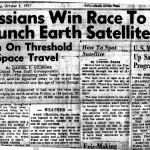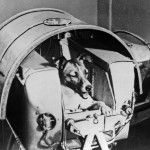


Sputnik, a Russian word meaning “satellite” or literally “fellow traveler”, is a name applied to spacecrafts launched under the Soviet space program. “Sputnik 1”, “Sputnik 2” and “Sputnik 3” were the official Soviet names of those objects.The Sputnik crisis was the American reaction to the success of the Sputnik program.[1]It was a key Cold War event that began on October 4, 1957 when the Soviet Union launched Sputnik 1, the first artificial Earth satellite.The launch of Sputnik scared the American public; President Dwight D. Eisenhower referred to it as the “Sputnik Crisis”. Although Sputnik was itself harmless, the Soviet’s success was a threat to the United States. Since the end of World War II the United States and the Soviet Union were in a Cold War–a tension filled rivalry that did NOT lead to a real war with armies. The same rocket that launched Sputnik could send a nuclear warhead anywhere in the world in a matter of minutes, crossing the oceans that successfully protected the United States from attack during both World Wars. Less than a year after the Sputnik launch, Congress passed the National Defense Education Act (NDEA). The act was a four-year program that poured billions of dollars into the U.S. education system. In 1953 the government spent $153 million, and colleges took $10 million of that funding; however, by 1960 the combined funding grew almost sixfold because of the NDEA.[2]After the initial public shock, the Space Race began, leading to the first human launched into space, Project Apollo and the first humans to land on the Moon in 1969.
